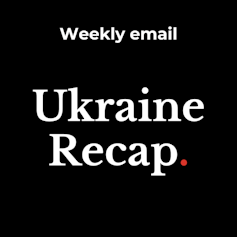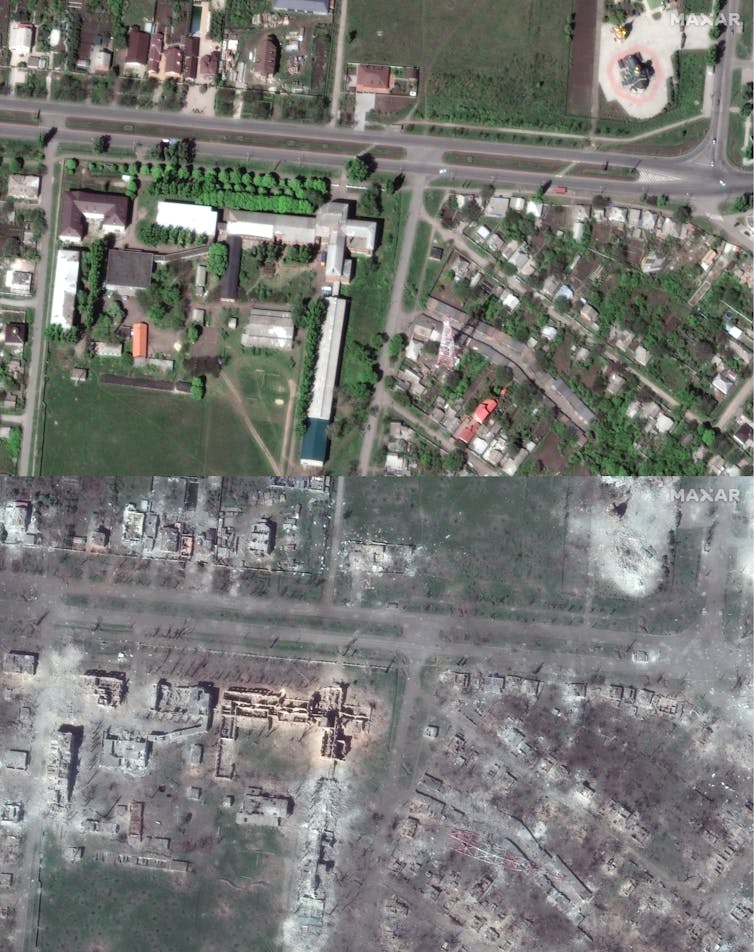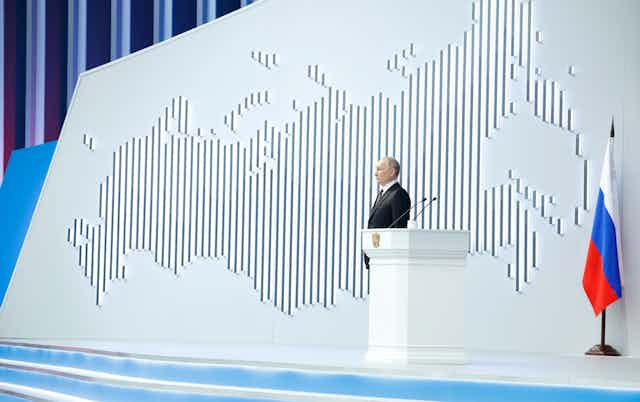Another day, another bloodcurdling threat from Vladimir Putin. The Russian president used his annual televised address to warn the west that he was prepared to defend his country, if necessary, by using nuclear weapons.
“They should eventually realise that we also have weapons that can hit targets on their territory,” Putin said, clearly referring to plans by some of Ukraine’s allies to supply medium- and long-rage missiles that could strike targets within Russia. “Everything that the west comes up with creates the real threat of a conflict with the use of nuclear weapons, and thus the destruction of civilisation.”
There has been a discernible sense of urgency about western discussions of Ukraine over the past fortnight. The loss of the town of Avdiivka, a key strategic position close to Donetsk, after weeks of heavy fighting and massive losses on both sides, has set off something of a domino effect in the area. Russia has used the momentum to push the frontlines several miles to the west as part of its winter and spring offensive.

In the previous Ukraine recap, we noted that Joe Biden has managed to get his US$95 billion (£75 billion) aid package through the US Senate. But the package still has to pass the House of Representatives, whose speaker, Mike Johnson, has yet to confirm it will even be given a vote. It’s clear from military reports emerging from Ukraine that the lack of ammunition is rapidly becoming an existential crisis.
Putin also probably had in mind the statement by the French president, Emmanuel Macron, at a security conference in Paris on February 26, that while there was as yet “no consensus” among Kyiv’s western allies about committing troops to the defence of Ukraine: “Nothing should be excluded. We will do whatever it takes to ensure that Russia cannot win this war.”

Since Vladimir Putin sent his war machine into Ukraine on February 24 2022, The Conversation has called upon some of the leading experts in international security, geopolitics and military tactics to help our readers understand the big issues. You can also subscribe to our fortnightly recap of expert analysis of the conflict in Ukraine.
This drew immediate pushback from most of the Nato leaders assembled at the conference, who raced to distance themselves from Macron’s position. Aside from anything else, there are major question marks about Nato’s ability to wage war in Europe against as formidable an adversary as Russia – which has, over the past two years, transformed into a war economy.
Kenton White, a Nato expert at the University of Reading, believes the increasingly ominous prospect of a confrontation between Nato and Russia will require a major rethink on the part of the western alliance. Hitherto, he writes, it has prepared to wage “come-as-you-are” wars, which would be fought with existing troops and weapons stocks.
Indeed, it appears such a rethink might already be happening. Nato is engaged in its largest exercises since the cold war – exercises designed specifically around the prospect of a war with a major power such as Russia. As Nato’s most senior military commander, Admiral Rob Bauer of the Royal Netherlands Navy, said last year: “We need large volumes. The just-in-time, just-enough economy we built together in 30 years in our liberal economies is fine for a lot of things – but not the armed forces when there is a war ongoing.”
Meanwhile, Stefan Wolff – a regular contributor to our coverage of the conflict over the past two years – struck a sobering note when he wrote that the west’s perceptions of the war had been turned on their head over the past 12-to-18 months by the lack of success of Ukraine’s counter-offensive. While Ukraine was scoring rapid successes on the battlefield in the summer and autumn of 2022, the talk was about finding an “off-ramp” to allow Putin a face-saving way out of an unwinnable war. But now, “increasingly, it’s the west that needs the off-ramp”.
Wolff, an expert in international security at the University of Birmingham, believes the west faces three choices. The preferable one in Ukraine’s eyes is for Nato to double down on its support, finding a way to ensure Ukraine gets the weapons it needs – not only to defend itself, but to inflict a comprehensive defeat on Russia.
However, talk is increasingly focusing on the second option – providing enough support to Ukraine to defend the territory it still has, which would involve making territorial concessions to Russia. The third, a comprehensive defeat of Ukraine, would have far-reaching consequences – none of them good.
Watching the war from space
A feature of this war has been the way that thinktanks and analysts such as the Institute for the Study of War (whose maps we use in these regular updates) are able to pinpoint movements on the battlefield with such accuracy.

Sylvain Barbot and his team from USC Dornsife College of Letters, Arts and Sciences in the US, have been using open-source data in order to analyse the development of the war from space. It has enabled them to build accurate before-and-after images of cities where the fighting has been fiercest, highlighting just how destructive the conflict has been.
Read more: War in Ukraine at 2 years: Destruction seen from space – via radar
Russia’s economic transformation
Considering the regime of sanctions imposed by the west, Russia’s successful retooling of its economy to put it firmly on a war footing is nothing short of remarkable. This echoes a similar transformation achieved by Soviet Russia during the second world war – something that changed the course of the conflict, swaying it in favour of the Allies.

Now Russia’s economy is completely dedicated to winning the war in Ukraine – and this is the main thing driving the country’s economic growth. Renaud Foucart, an economist at Lancaster University, says that while this has kept Russia in the war and is arguably giving it the upper hand at present, it also means Russia can’t afford to win, as any attempt to transform back would be too costly.
Alexei Navalny and the Russian opposition
For those of us who had been following the fate of Russian opposition figurehead Alexei Navalny, the news of his death in a prison camp in the Russian Arctic had a certain sad inevitability to it. Navalny flew back to Russia in January 2021 after recovering from being poisoned with Novichok on a flight across Siberia the previous year. No sooner had he and his wife, Yulia Navalnaya, disembarked from the flight to Moscow than he was detained, tried and sentenced.
Navalny spent the last three years being shunted to ever more unpleasant prisons across Russia, appearing every so often – usually via video link – to be sentenced to further prison time on spurious charge after spurious charge. Alexander Titov from Queen’s University Belfast charts Navalny’s courageous career – he was perhaps the biggest remaining thorn in Putin’s side.
So, where does Navalny’s death leave the opposition to Putin in Russia? According to Stephen Hall, who researches authoritarian regimes at the University of Bath, the depressing answer is that most opposition leaders are now either dead or in jail. Showing enormous strength, Yulia Navalnaya appeared at the Munich Security Conference hours after the news of her husband’s death had broken, to pledge to continue his work.
Other than Navalnaya, perhaps the most effective opposition to the Russian president and the war in Ukraine will be the wives and mothers of the troops. If casualties continue to mount – and especially if the Russian military starts to suffer the same sort of setbacks as it experienced in late 2022 – then their voices can only gain in resonance, Hall argues.
Read more: In Putin's Russia, the death of Navalny has left the opposition demoralised but not defeated
Ukraine Recap is available as a fortnightly email newsletter. Click here to get our recaps directly in your inbox.

